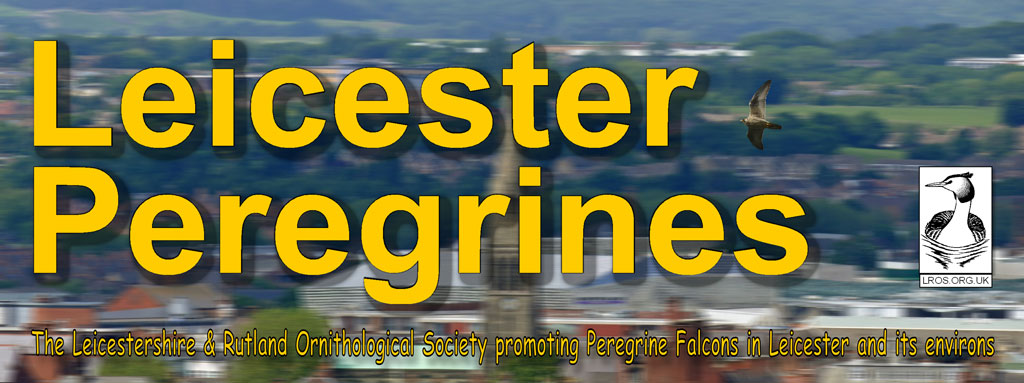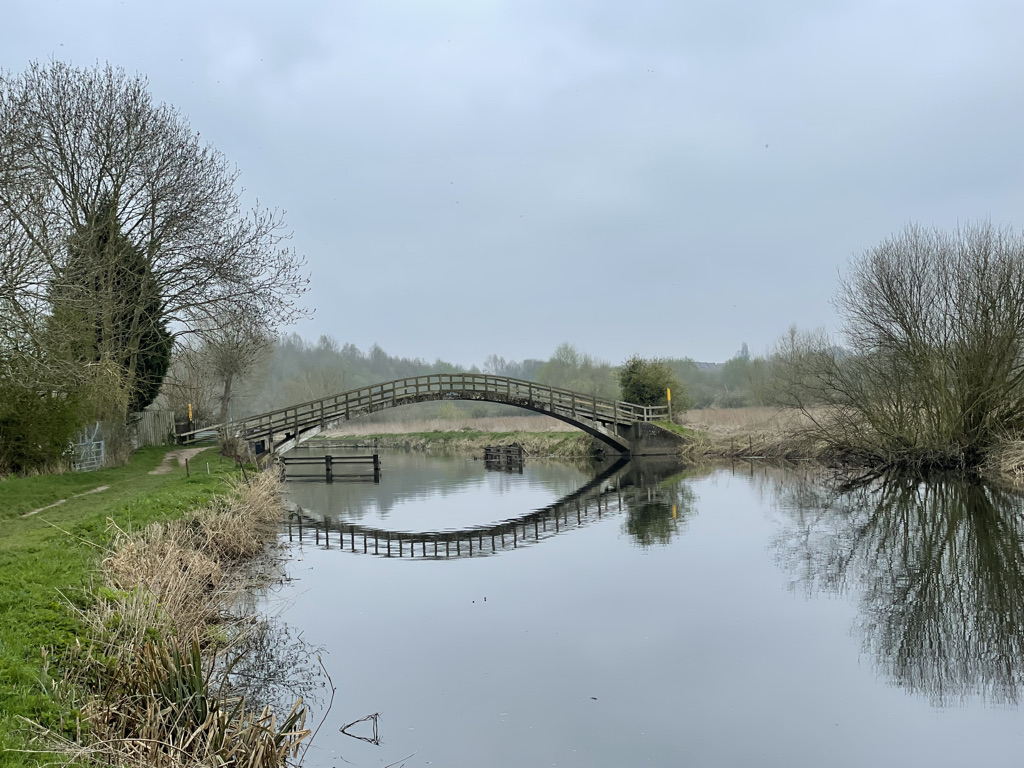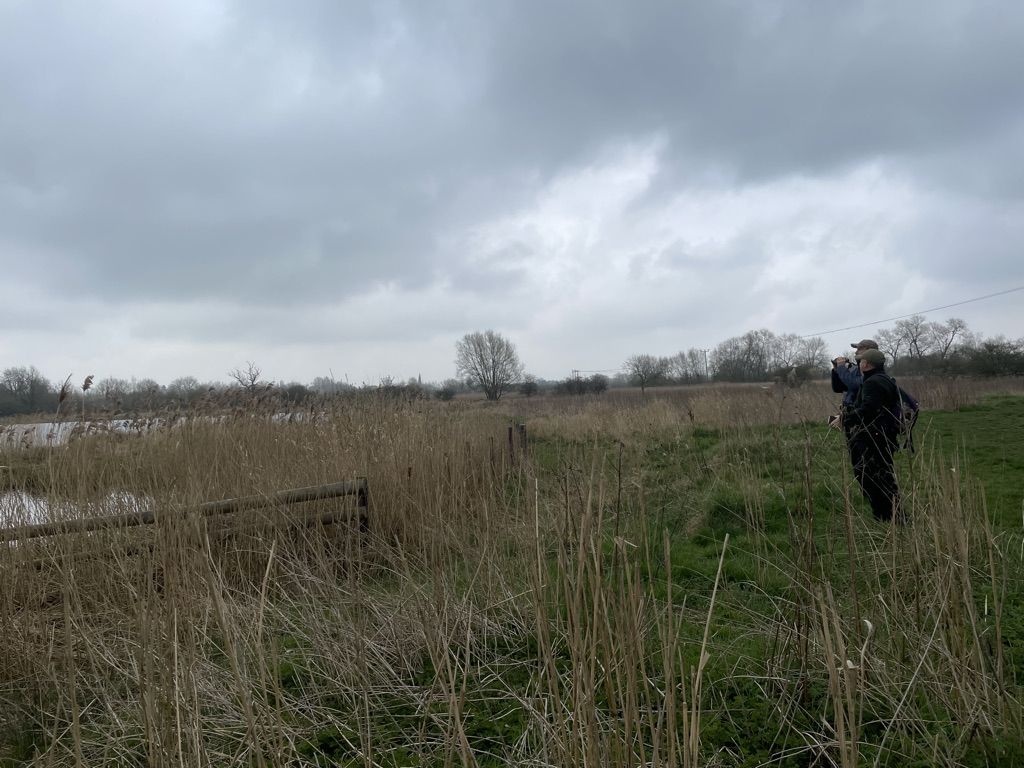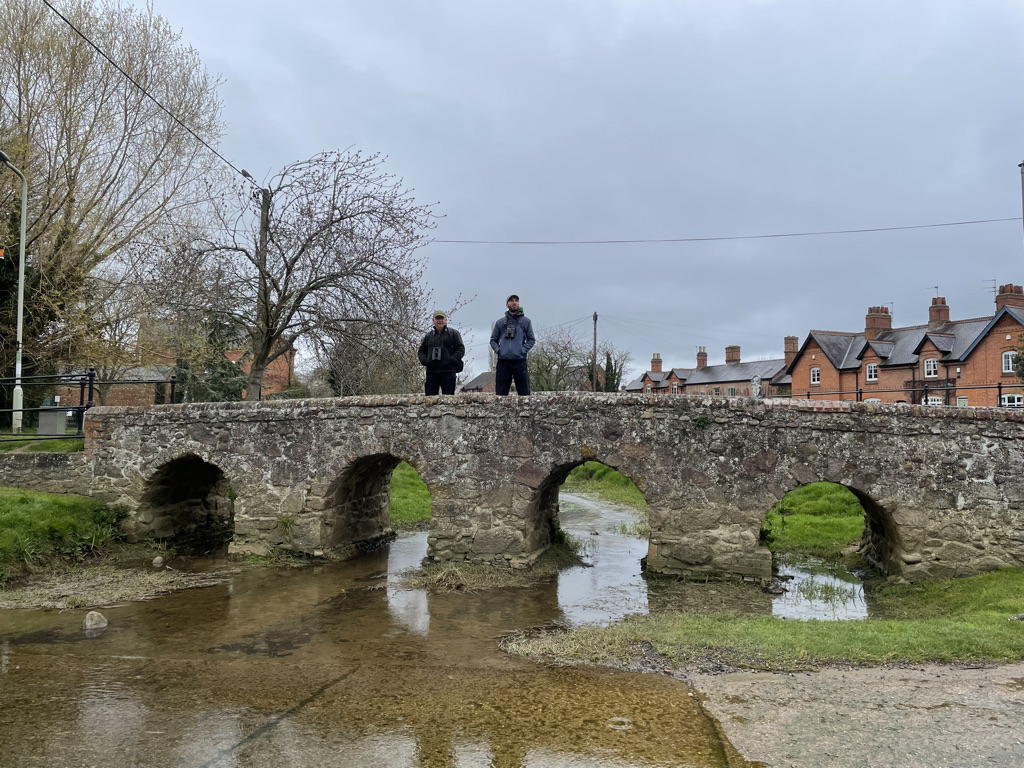Birding the Leicestershire Round
Section 2 – Mountsorrel to Frisby–on-the-Wreake, Wednesday 30th March
Participants: Jim, Sue and Josh. Gary and Candice joined us for dinner at the Blue Bell Inn, Hoby.
Despite a rather ominous forecast, promising rain, sleet and hail, our walk began in overcast but calm conditions as we left the Buttercross in Mountsorrel and followed the path along the River Soar by Sileby Marina and Mill into Cossington Meadows. Seemingly undeterred by the plummeting temperatures, the air was alive with the spring songs of Dunnock, Robin, Blackbird, Chiffchaff and Wren.
Grey Wagtail was spotted by the first bridge and Moorhen, Canada Goose and Mallard escorted us for a while along the River, together with Lesser Black-backed and Black-headed Gulls. A large flock of around 100 Brambling flew over our heads and landed in nearby trees. We were full of anticipation as we reached Cossington Meadows because Garganey had been reported here over the past few days and we were keeping our fingers crossed that one or two might still be hanging around. Our first scan of Tern Pool wasn’t very promising, but as we stood awhile, we heard the call, like running a fingernail across the teeth of a comb. It was too close for us to see being hidden by the near vegetation. After a few moments, Josh managed to spy the the male through the vegetation at first, being so much taller than the two of us! It floated out into the open and a female was located nearby. A total of six singing Cetti’s Warbler was recorded in this area alone. A pair of Shelduck was spotted over the pool and two pairs of Oystercatchers made a noisy appearance as they circled overhead, with one pair settling on Hobley Lake where a female Goosander was found sleeping on the island.
We eventually dragged ourselves away from the Meadows, passed through the delightful little village of Cossington and began the ascent up the valley to Ratcliffe College. We paused for lunch, perching on a conveniently placed large log and enjoyed the extensive views back over the Soar Valley to Charnwood.
The largely agricultural landscape played host to some significant sized flocks of Rook, Crow, Jackdaw and Woodpigeon. Kestrel and Buzzard were also seen in this area and Greenfinch and Chaffinch sang from the hedgerows. After Elm’s Farm, our route then took us through a small tree plantation after which we had to carefully cross the busy A46 before descending into the Wreake Valley.
The path to Rearsby Mill took us through a combination of pasture and agricultural land. Amongst other species, Siskin, Starling, Song Thrush and Long-tailed Tit were found along this stretch. One of the highlights however was a large flock of some 100+ Linnet, with their beautiful songs emanating from the treetops and echoing across the valley. These were soon joined by over 100 each of Redwing and Fieldfare and at least five Mistle Thrush.
Rearsby Mill itself, complete with mill pond and immaculately kept properties and grounds provided a wonderful scenic interlude along our route before we pressed on to Rearsby village with its seven-arched medieval packhorse bridge. The temptation of the local tea shop here was too much to resist and a very pleasant half an hour was spent warming up and drinking tea before resuming our walk to Hoby. On emerging, we discovered that we had unwittingly avoided a short wintery shower, which turned out to be the only one of the day, luckily for us!
Our walk to Hoby took us across a railway line, alongside Thrussington Mill, over the remnants of Thrussington Mill Lock (part of the Melton Mowbray Navigation which closed in 1877) and through more agricultural land, dotted with several Rabbits and Brown Hares. There were a few large Rookeries in this area, which depending on the angle we approached them from, gave us widely different numbers of nests. After several re-counts, with three pairs of eyes on the case, we eventually reached consensus with the largest of these was holding 60 nests!
Groups of Siskin, Goldfinch, Greenfinch and Redwing accompanied our progress, and another sizeable flock of Jackdaw cackled into view, together with a further 57 Rook nests with attendant birds projecting a varied repertoire of calls from the bass pirate-like ‘arrrrghs’ to soprano vocalisations more akin to gulls.
A pleasant last stretch from Hoby to Frisby did not produce any new species of birds, but we did have good views of two Roe Deer in the valley. A habitat of rough, tussocky grass in this area looked a prime candidate for Barn Owl (even Short-eared), but none were found on this occasion as it was too early in the evening. We resolved to return at some point around dusk to check this area out again. Our second section concluded with a very enjoyable meal at the Blue Bell Inn, Hoby with Gary and Candice. The staff were very welcoming, the food was excellent and a good time was had all round.



